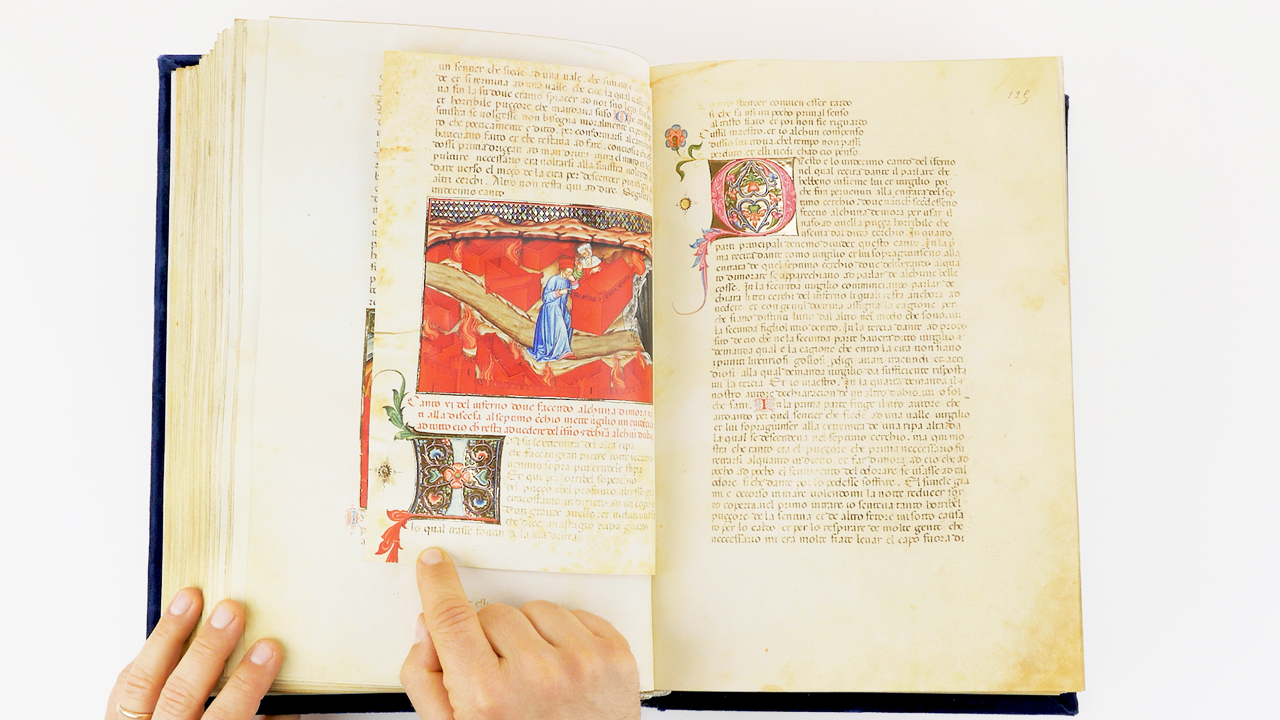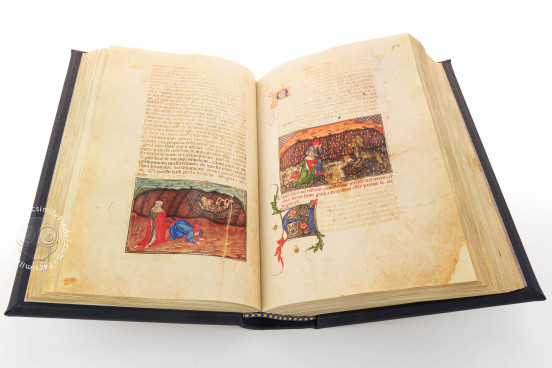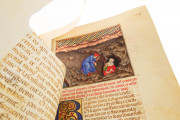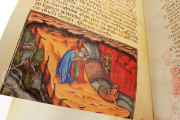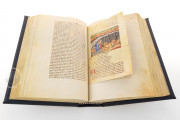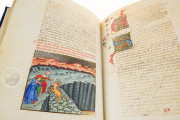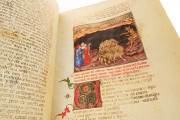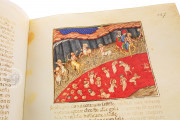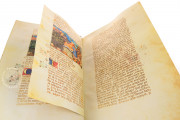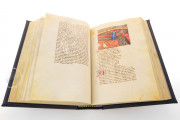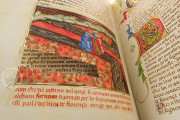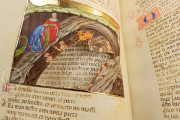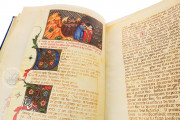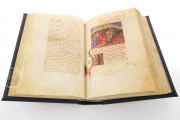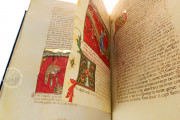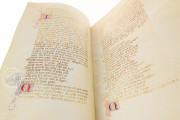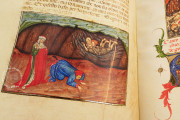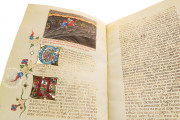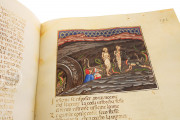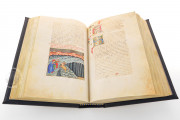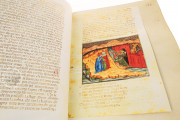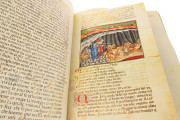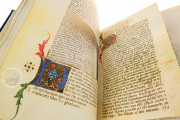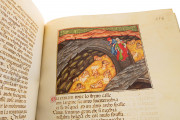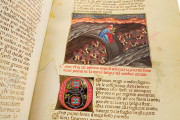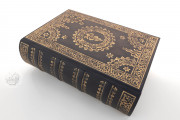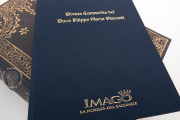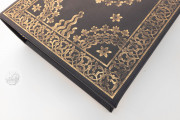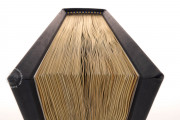The Paris-Imola Inferno is one of the most richly decorated medieval copies of the Dantesque masterpiece, carried out on behalf of the Duke of Milan Filippo Maria Visconti. It is among the finest works of the "Master of the Vitae Imperatorum," illustrator of great prestige in Northern Italy during the first half of the fourteenth century.
The codex is currently divided into more fragments: one section is kept at the Bibliothèque Nationale de France (fifty-nine miniatures in 381 folios – MS Italian 2017); a small portion is in Imola (Biblioteca Comunale, MS 76) where twenty-one pages and thirteen illuminations are kept; the rest of the manuscript is lost.
While there are no Dante's autograph texts surviving today, his masterpiece has become extremely widespread: by virtue of its almost 900 manuscripts, many of which are illuminated, the Comedy is second only to the Bible.
A Challenge for Theologists and Illuminators
The first commentaries started spreading rather soon, inspired by the complexity of the theological subject. Among the others, after Benvenuto da Imola and before Cristoforo Landino, Guiniforte Barzizza tried his hand at it. The richness and complexity of the Dantesque journey served as a challenging proving ground for the illustrators throughout time.
Not all the illuminated copies of the Divine Comedy have as many illustrated episodes, three or four per canto, as it occurs in the codex we are describing. For the most part, Divine Comedies have a single scene placed in the first part of the cantos, sometimes one or two scenes per cantica.
No one can rule out that Guiniforte Barzizza himself didn't play a big part in the preparation of the challenging illustrative program: the Paris-Imola codex was originally adorned by more than 115 scenes, only seventy-two of which are left to this day.
How the Manuscript Passed from Hand to Hand
The codex provenance is exceptional. From the notorious Visconti-Sforza library in Pavia, where it was still kept in 1469, to the French descent in Italy at the turn of the century, the manuscript passed into the possession of King Luis XII.
It was probably that same French Ruler who shortly afterward offered it to Giovanni Caracciolo Duke of Melfi as a reward for the services rendered to the Crown. The composition later passed to Caracciolo Antoine de Cardaillac's son in law and then to his heirs. In 1835 it was recovered in a castle in Dordogna by the erudite Gaston de Flotte, who acquired and brought it to Marseille.
Between 1836 and 1837 together with the Imolese refugee Giuseppe Zaccheroni, he made arrangements to divulge the yet unknown text. Zaccheroni, exile in France after the persecutions of 1831, completed the critical version of the text, which he published in 1838. Once back in Italy, in 1865 he was elected deputy of Imola's district.
In 1866 Zaccheroni donated a copy of his critical edition to his hometown library and, between the printed pages, he included the twenty-one folios of the original manuscript he owned. The remaining part of the Visconti code was sold in 1887 by the heirs of de Flute to the Bibliothèque Nationale de France, where is currently kept.
We have 2 facsimiles of the manuscript "Paris-Imola Inferno":
- Divina Commedia del Duca Filippo Maria Visconti facsimile edition published by Imago, 2021
- Inferno Imola facsimile edition published by Imago, 2020

